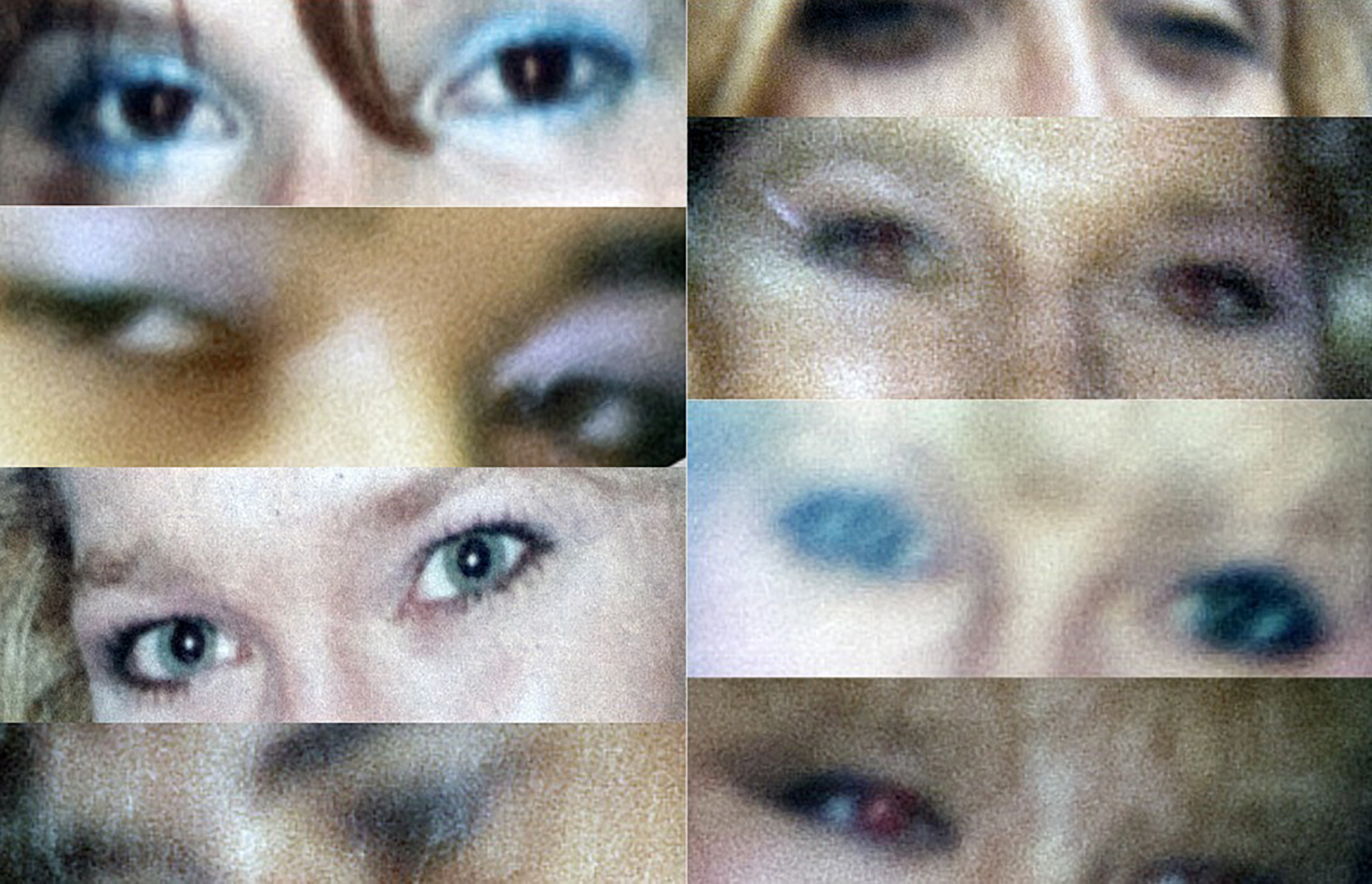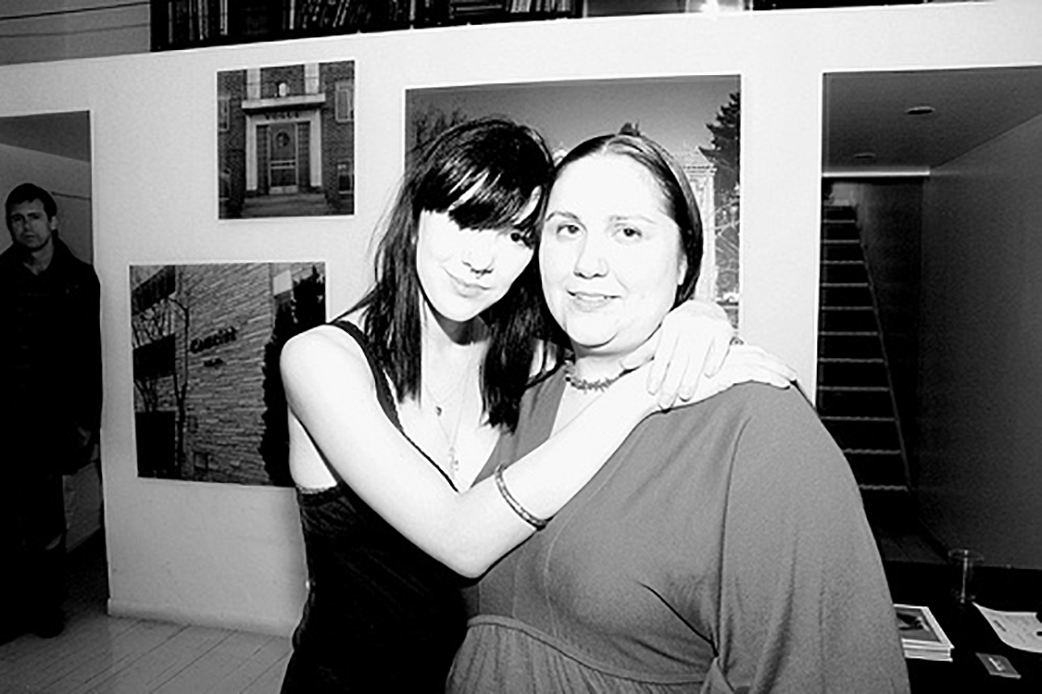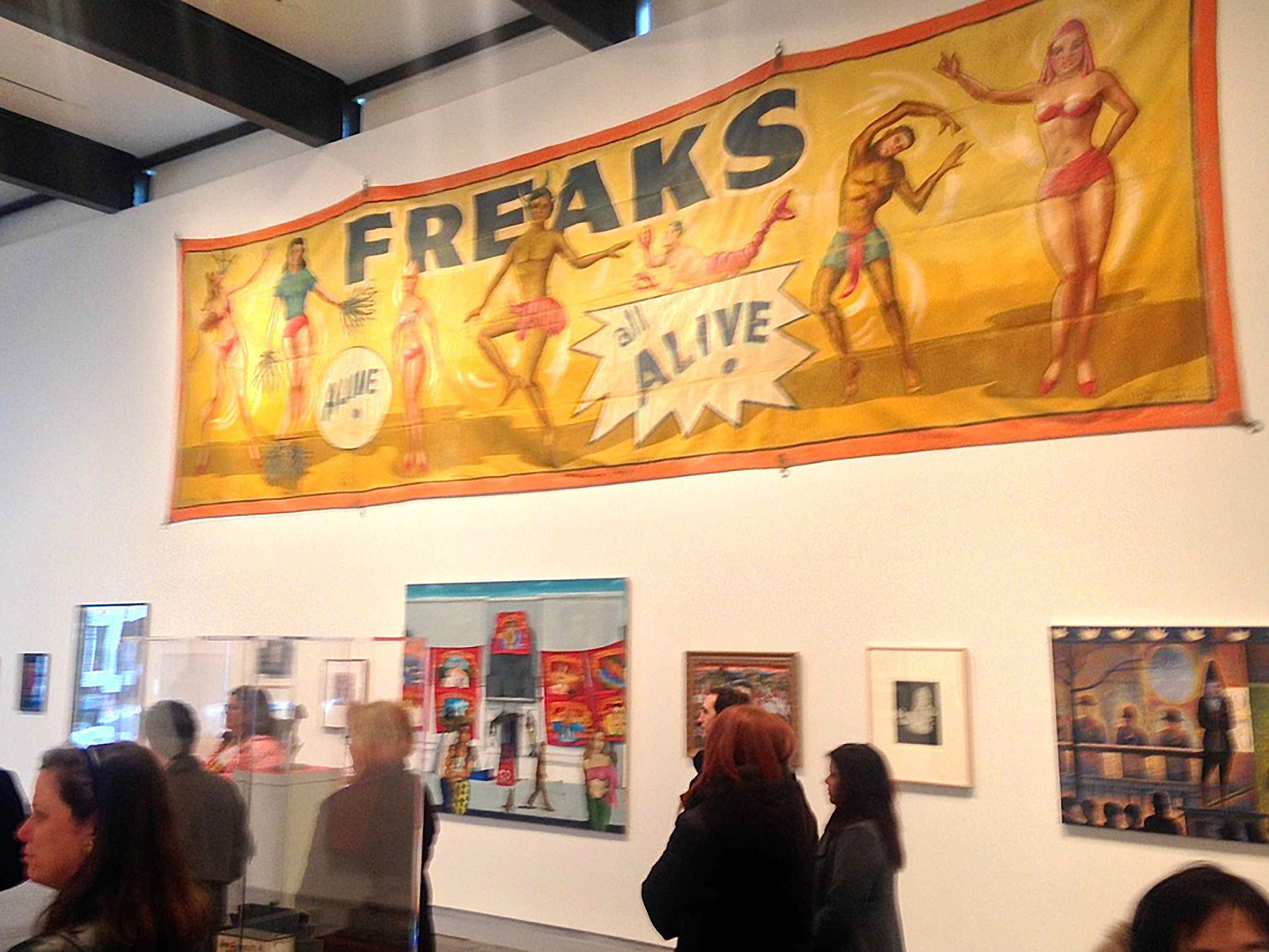
Page from “The More I Know About Women” by Lisa Kereszi in zingmagazine 24
Lisa Kereszi’s upbringing in a family whose business was in junkyards and pleasure was in biker rallies seems like an unlikely lead into a world of art and academia at Bard and Yale, but this background is what enabled her to see the world through a cognizant and experienced set of eyes. Likely possessing an acute sense of self-awareness at an early age, Kereszi was able to understand the precarious but also the remarkable aspects of her environment, making her a determined photographer who has the confidence to work alone on projects that would make others feel leery. Her project in zingmagazine issue 24 is a conceptual reflection on this upbringing, utilizing photographs taken by her father during his biker heydays. This project comes directly out of her artist book of a similar name, The More I Learn About Women, published in 2014 by J and L Books. As a new mother, Kereszi is preparing to explore the realms of family life and childhood from a different perspective than she has in the past. Lisa and I exchanged emails, in which she shared the story behind her longstanding connection with zingmagazine, her interest in sideshow culture, and experiences in photography around the world.
Interview by Hayley Richardson
“The More I Know About Women” in issue 24 is your fourth zingmagazine project. While it features cropped images of women’s eyes, it also speaks about your relationship with your father. Your family has had a strong impact on your aesthetic. How has their influence grown with you over the course of your career?
I’m not sure I’d say it has “grown,” exactly, but receded, deepened and changed, as I have gotten further and further away from my formative years. It’s the “You can’t go home again” Thomas Wolfe thing in play. This book was collated and created when I was expecting my child, so that new role I was about to embark on had a lot to do with the impetus and my need for making this piece. There’s a section in the book that depicts children in the rough and tumble biker world I grew up in, dragged to keg parties and hillclimb motorcycle competitions, Bike Week in Daytona, camping out in the Chevy Nomad with it’s Harley stickers on the back, while my parents went out to see Joan Jett (my favorite!) perform at the Harley Rendezvous in Upstate NY. I would never raise a child like that, although I guess it did have positive effects, but it was strange and sort of painful to go through.
You have cited other influences like Nan Goldin, Brassai, and Robert Frank. What other artists, outside of photography, do you connect with or feel inspired by?
Although I just bemoaned my alternative lifestyle childhood, I love John Waters, and his sincere pushing of limits. I’m not a limit-pusher, but I appreciate it and sort of live vicariously when watching characters like Divine, Edith Massey, Mink Stole and David Lochary practice their filthy behaviors. I guess I also love how he pulled this real and true underbelly of poor Baltimore into the art world’s sights, something I can relate to, being born on the wrong side of the tracks outside Philly. Speaking of which, the imagery, mood and character-creating of Bruce Springsteen’s work has always hit me right in the gut. I love David Lynch’s pure weirdness, Louis C.K.’s brutally funny honesty. I grew up on SNL.

Lisa (right) with Erin Bardwell celebrating the release of her book, Fantasies, at the zing office in March 2008
Aside from having multiple projects in zing, you have photographed numerous zingmagazine parties and your “Facing Addiction” series is part of the Dikeou Collection. Could you talk about how you first became acquainted with Devon Dikeou and the zing milieu?
I think I was probably working for Nan Goldin at the time, and she got so many invites to so many cool parties that she would never have time to go to herself, so me being a 21 year old, I took a few of them as invites to go myself! A very early zing party was one of them. I was showing at Pierogi 2000 in Brooklyn, and I think Devon just connected with the work I sent her after I learned about zing at that party. I think it might have been at a bowling alley near Union Square. There were so many fun zingparties that I can’t remember each one well on their own.
Some of the projects featured on your website, like Fun n’ Games and Fantasies, span several years. Are the themes of these projects thought out ahead of time as something you’d like to explore long-term, or do the relationships between certain images taken years apart emerge later on?
I think I come at it both ways. But for the most part, I’ll be interested in one specific thing that is related to a bigger concept, movie theaters or strip clubs, for example, and then I’d go seek out permission to photograph a handful, or a whole bunch, of them. It isn’t until later that they combine with pictures of Coney Island or Times Square or Florida into something bigger, like the series you mentioned, even though my interest in each of them stemmed from the same unconscious (or semi-conscious) place.
Can you recall a time when you felt especially challenged by your subject matter or territory?
I suppose working with family and the failed family business was at the same time both easy and difficult. But you just put your blinders on and press forward. Also, I think finding permission for locations, such as strip clubs, has been particularly challenging, on a practical level. On top of it, sometimes you get the written or verbal permission, and show up to shoot, and the message has either been lost in translation, forgotten, or was never passed down the chain of command to the gatekeeper. It can be frustrating.
Have you ever worked collaboratively with another photographer or other artist?
Not really; I’m a bit of a loner. I don’t even like having assistants!
As a photography professor at Yale you must enjoy sharing your knowledge and experience with students. What has working in the collegiate atmosphere been like for you?
It’s been like getting a second degree all over again, between the re-learning and also the constant flow of interesting people and work going through the building. You have to teach yourself more than you knew before in order to teach the students anything. You need to have something to say, too, a position, a mission, in addition to knowing the technical stuff. It’s also about helping someone find oneself than really recounting experiences, although experiential anecdotes can certainly help someone to understand how things work in the real world.
You had an early interest in writing before photography became your main focus, correct? What kind of writing interested you, and is it something you still do at all?
Oh, I guess I thought I’d be a poet, which is sort a ridiculous career path—but so is visual art! I had an English Lit teacher in college tell me that I didn’t have the love of language necessary to be a poet. It stung, but he was right—at the time, at least. I write a little bit now, but no poetry, just statements about work and essays about things I am interested in, photography-wise.

Installation shot of “Sideshow” exhibition curated by Lisa Kereszi at 32 Edgewood Gallery. Image courtesy of Yale Alumni Magazine.
You curated an exhibition, “Sideshow,” at Yale School of Art’s 32 Edgewood Avenue Gallery earlier this year. What was it like organizing this show? Did you learn anything new about sideshow history?
It was a great experience, a lot of work, and a long time in the making. I was inspired by the traveling show that curator Robin Jaffee Frank put together at the Wadsworth Atheneum in Hartford, which I unofficially consulted on and in which I have two pieces. “Coney Island: Visions of an American Dreamland 1861-2008” opens at the Brooklyn Museum this November. When it was at its home museum, in order to run a concurrent show, I was given the opportunity to use the freestanding contemporary gallery at the School of Art by our Dean, the artist and curator, Robert Storr, who is as interested in the low-brow richness of sideshow and carnival culture as I am. If anything, I only wish my “really big show” (over 70 works, and a massive list of programming that included people like Ricky Jay coming to speak) was a REALLY BIG SHOW, but Storr reminded me that this was not a museum show, but one at a one-room alternative space with a limited budget. I had tried showing him a salon-style hang with over 150 works borrowed from far and wide, and I quickly realized as we installed it in January 2015 that he was right—it needed to actually be curated.
I knew a fair amount about this world and who the players were before hand, but the depth of the knowledge of these people is really truly frightening (in a good way.) Performer Todd Robbins got a preview of the show being installed when he hand-delivered his Feegee Mermaid sculpture, and schooled me on details and anecdotes about the pieces in the exhibition and the characters depicted, including artworks that I own, but knew not enough about. In the upcoming catalog, I include my curator’s notes, which explain who the people are who are depicted, so that they are fully developed human beings in a viewer’s mind. It includes background information on people like Eddie Carmel, the Jewish Giant of Arbus fame, and Mat Fraser, actor, performance artist and disability activist.
“Visions of an American Dreamland” is currently at the San Diego Museum of Contemporary Art and I am always curious how traveling shows are received by audiences in different parts of the country, especially this one with a regional specificity. Do you have any thoughts on how people might respond to it differently on the west coast vs east coast?
Well, even in Hartford, where it opened, it must have been a bit removed-feeling. That said, I think the show deals with universal and very democratic things—like the human need for escape from reality. But the big moment, in my opinion, is this Fall when it opens at the Brooklyn Museum, just a subway ride away from the real thing. It’s going to be a big show, although it reminds me, in some ways, of the work and little show I did about Governors Island, which was at the Municipal Art Society in 2004, and then shown on the island later in an old commanding officer’s house. I think about that project, because it’s about a contained, specific place, and it’s also an island of New York, for sure, but I think about the throngs who will go to see this show who have personal, historical, deeply-felt experiences from the place. That was one of the interesting things about doing that Public Art Fund project—people who lived on the island saw the show, and had visceral, personal reactions to some of the depictions of place. For me, it was like my own private photographic ghost town, but to them, a few thousand people, it was once their home.
As an artist who has traveled, exhibited, taught, and photographed all over the world, have you noticed any major differences in how people engage with photographers (or art(ists) in general) in different countries?
The world is a very big place, and the more I teach and meet people from all over, the more I realize how small my place really is! Each culture forms a different kind of museum-goer, who has unique background and connections to make with new work. If anything, I am more aware of how people in public react to the presence of a photographer on the street. Some are very trusting, like in Shanghai, and some are quite the opposite, like in Paris. Some places fear photography, like here, but other cultures value it and understand its importance, like in Berlin or London, I think.
What are some areas of interest that you would like to investigate photographically that you have not done yet, or would like to revisit?
I’m not sure I’m ready to do more revisiting than the current zing project does. Not for a while, at least. I have some ideas up my sleeve, the most pressing of which is something to do with being a new mom. It’s already well-mined territory, but I will find something new to say, hopefully. I also have a pile of junk that I have been adding to all the time—sad, little discarded things I just want to make very basic still-lifes of with a 4×5 camera, when I get my act together and set up a little studio in my office.
What do you have coming up in the near future?
See above!